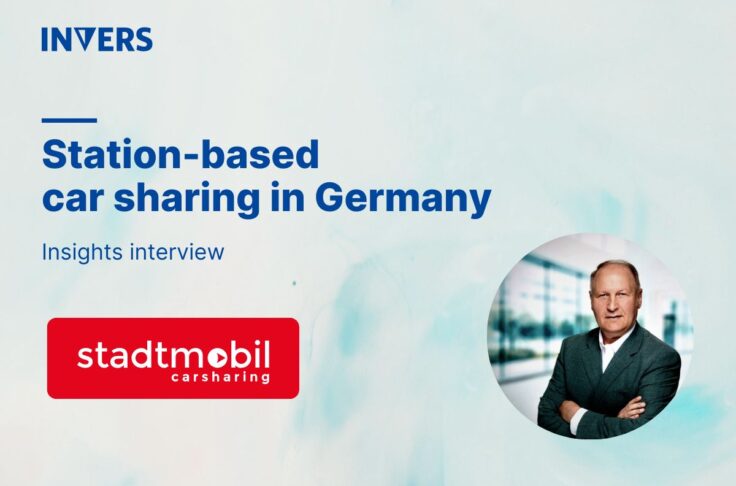Applying Data Science in Operations: Lessons from felyx
Summary
felyx is a successful scale-up, offering shared electric scooters in the Netherlands, Germany and Belgium. Annanina Koster works at their data science department and aims at improving the operations and their utilization rate.
felyx is on a mission to provide more sustainable and shared urban transport. Therefore, their business revolves around ensuring there is always a fully charged and well-functioning moped available whenever their customers want a ride, while at the same time minimizing their operational costs. Their data and analytics team contributes to this goal with a variety of data science use-cases, which Annanina shares with us in this interview.

What data science use cases do you see in moped sharing?
Felyx is on a mission to connect people through green and shared rides. The micromobility market is highly dynamic, and both our mopeds and our customers are always connected, providing us with ever-changing challenges. This ubiquity of data gives felyx the tools, but also the responsibility to always aim for a smooth and remarkable experience. In practice, this means our data science use cases all revolve around ensuring there is always a fully charged and well-functioning moped available when our customers want to make a ride while minimising our operational costs, aiming to achieve the best possible user experience.
We would like to highlight three example use cases on the operational side. First, we use predictive machine learning to schedule customer service agents, scooter support agents, and mechanics. Second, we employ prescriptive analytics to guide city managers’ decisions in repositioning mopeds between or within cities. Finally, our recommendation algorithms provide on-street support agents with the fastest routes along empty mopeds that need their batteries replaced. These actions help us to improve our operational efficiency and help us progress towards true operational excellence.
We also use data science to connect our customers to the internal felyx community. To facilitate this, we perform user segmentation and clustering based on ride behaviour, monitor retention, and predict the risk of customer churn. Our dynamic pricing engine further engages our customers and motivates them to take the right actions, by giving free minutes if they park in high-demand areas that offer enough space and giving discounts for mopeds in less popular areas.
How are data science and urban mobility linked?
E-moped sharing has a positive impact on urban mobility and helps to build a more sustainable future. We feel responsible to optimise the use of public space and work together with the local government. Data science plays an important role here too. In order to limit the nuisance of poorly parked vehicles, our customers end their ride by taking a picture of their parked moped. The result is another opportunity to leverage machine learning: Identifying wrongly parked vehicles and recording proof when there is a potential offence. This enables us to offer a smooth experience for both our customers and the residents.
How do you increase operational efficiencies and increase customer value by means of data analysis?
These data science use cases add value by automating large-scale and complex processes. However, our internal analytics ecosystem is equally important. We expose our millions of data points to all felyx teams with readymade charts, data marts, and detailed dashboards. On top of that, we have an intuitive self-service analytics environment with an easy drag-and-drop interface for non-technical colleagues to create their own valuable insights for decision-making. We give our central and local operation teams fine-grained insight into battery usage or spare parts. Our marketing team can dive into riding behaviour and track campaigns. Finance can keep track of all the business metrics. It doesn’t matter which team you are on; we will make sure that everyone has access to the right insights.
More importantly, felyx fosters a data-enabled culture, and we actively democratise data by evangelising and educating our colleagues in data literacy and privacy. We track the usage of our dashboards and applications and chase ambitious targets for the number of active users. Naturally, we adhere to all relevant data protection principles and GDPR regulations.
How does your dynamic pricing approach work?
Our customers enjoy the freedom of parking anywhere in our service area. Of course, some areas experience higher demand than others. Ideally, we would move mopeds from low-demand areas to high-demand areas, where they serve more customers and produce higher revenue. Moreover, mopeds that linger longer in low-demand areas are at a higher risk of being vandalised or being a nuisance to the local community. Our dynamic pricing engine aims for these mopeds to be moved faster to other, more rewarding areas, by giving an attractive discount.
Our machine learning system estimates the idle time and expected revenue of a moped based on various internal and external data sources, from information about the state of the moped, and the location where it’s standing, to global demand and the weather forecast. The real-time engine uses these forecasts, statistics, and business logic to assign the right discount to the right mopeds at the right moment.
Since when do you deploy dynamic pricing and what are your learnings since the first implementation?
We started with a small experiment in The Hague in 2020. After preliminary positive results, we started developing the dynamic pricing engine as we have deployed it today. Our first pilot was in 2021, and we rolled it out to most of our cities end of 2021.
The largest challenge in development was – and still is – to test and evaluate the effectiveness of dynamic pricing. We ran A/B tests in all our cities – experiments in which we infer the additional revenue for mopeds that were discounted, compared to a control group without discounts. However, proving causal effects in these experiments is difficult because of the strong network effects between mopeds. The decision of one customer to make a ride on a moped – discounted or not – inadvertently affects the decisions of other customers in the area. Lastly, given the dynamic nature of the market and the many factors that play a role in the planning process of a trip, data also differs significantly from day to day.
To continuously improve our dynamic pricing engine and enable data-driven decision-making for our pricing strategy in general, we are developing a framework for scalable experimentation. The ability to run such experiments easily and reliably is the next step in maturity for felyx as a data-driven scale-up.
Are you interested in more moped sharing insights? Check out our newest Global Moped Sharing Market Report.


